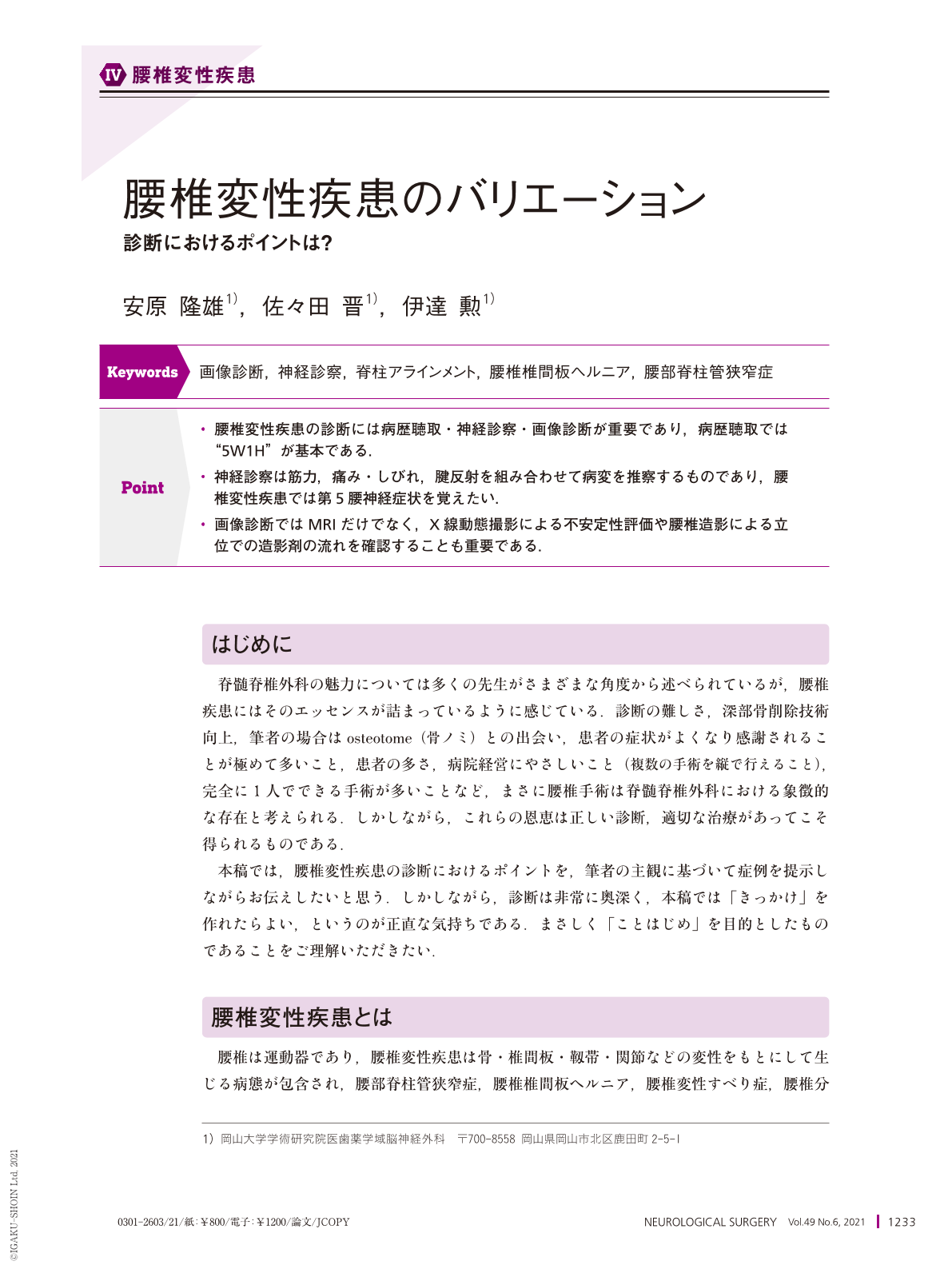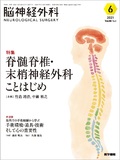Japanese
English
- 有料閲覧
- Abstract 文献概要
- 1ページ目 Look Inside
- 参考文献 Reference
Point
・腰椎変性疾患の診断には病歴聴取・神経診察・画像診断が重要であり,病歴聴取では“5W1H”が基本である.
・神経診察は筋力,痛み・しびれ,腱反射を組み合わせて病変を推察するものであり,腰椎変性疾患では第5腰神経症状を覚えたい.
・画像診断ではMRIだけでなく,X線動態撮影による不安定性評価や腰椎造影による立位での造影剤の流れを確認することも重要である.
Accurate diagnosis is important for lumbar degenerative diseases. Patients' history, neurological examination, and diagnostic imaging are the three pillars for accurate diagnosis. While collecting medical history, 5W1H of the symptoms should be considered. Muscle strength, pain and numbness, and deep tendon reflex are the basic parameters in the neurological examination. A combination of the results of each tool is needed to facilitate precise diagnosis. This should be followed by diagnostic imaging to confirm the diagnosis. We feel relieved when neurological examination and diagnostic imaging reveals congruent results. The symptoms of lumbar degenerative diseases are the results of[static factors: the stenosis of the canal/intervertebral foramen]×[dynamic factor: the instability]. The T2-weighted MRI images effectively reveal canal/intervertebral foramen stenosis. Short-T1 inversion recovery(STIR)of MRI reveals early fractures and inflammation of the spine. CT findings help to imagine the process of drilling and screw insertion. A whole spine X-ray is good to reveal spinal alignment. Roentogenkymography with anteflexion/retroflexion reveals the instability of the lumbar spine. Myelography is effective in knowing the cerebrospinal fluid flow in a standing position. Therefore, accurate diagnosis and careful treatment are needed to obtain the appropriate outcome for a prolonged period after spinal surgery.

Copyright © 2021, Igaku-Shoin Ltd. All rights reserved.


